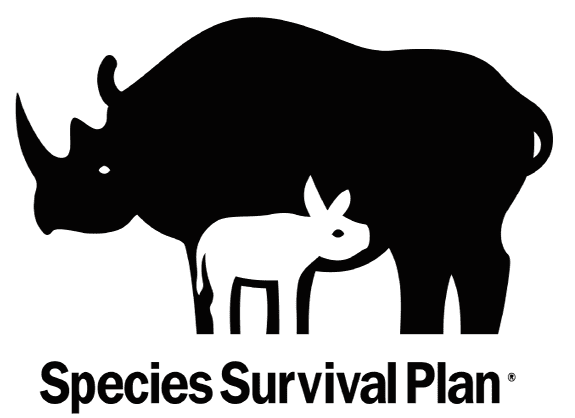
Gray Wolf
Once the world’s most widely distributed mammal, the gray wolf’s range has been greatly reduced due to hunting by ranchers to prevent them from preying on livestock. Gray wolves are social animals that have a complex communication system involving body language, barking, growling, “dancing,” howling and marking their scent.
Range & Habitat
Arctic tundra, forests, and arid landscapes of North America. Gray wolves are mainly found in the northern United States, Alaska, and Canada.
Conservation Status: Least Concern
Least Concern, however, hunting by humans and habitat destruction are main reasons for the almost total eradication of the gray wolf from much of the United States.
Diet
In the Wild: Moose, elk, caribou, mountain sheep, musk oxen, ground squirrels, hares, mice, beaver, fish and berries. At the Zoo: Meat diet, exotic canine diet, rabbits.
Life Span
Fun Facts about the Gray Wolf
- Gray wolves howl to communicate with each other. Sometimes wolves howl to gather the pack to hunt, to express territorial dominance or to let another wolf know its location. Individual wolves have their own distinct howl that can be heard by others from over 6 miles away.
- Gray wolves use their tails to express their moods or status within the pack. A tail that is wagging, drooping, or hanging is a sign that the wolf is relaxed. If a wolf has its tail tucked between its legs, it is a sign that the wolf is showing submission to another wolf. A tail held in a high position indicates power and dominance. A stiff, horizontal tail is a sign that the wolf is about to attack.
- After a pack of gray wolves hunt and kill their prey, the most dominant wolves will eat first and the least dominant wolves eat last. A single gray wolf can eat up to 30 pounds of meat in one meal.
Sources
Gray wolf. (2019, October 03). Retrieved May 15, 2020, from https://nationalzoo.si.edu/animals/gray-wolf
Gray Wolf. (2020). Retrieved May 15, 2020, from https://www.nwf.org/Educational-Resources/Wildlife-Guide/Mammals/Gray-Wolf
River of No Return. (2020, April 10). Retrieved May 15, 2020, from https://www.pbs.org/wnet/nature/river-of-no-return-gray-wolf-fact-sheet/7659/
Wolf Communication Part 2: Body Language. (2013, December 15). Retrieved May 15, 2020, from https://wolfsanctuarypa.org/2013/12/15/wolf-communication-part-2-body-language/


